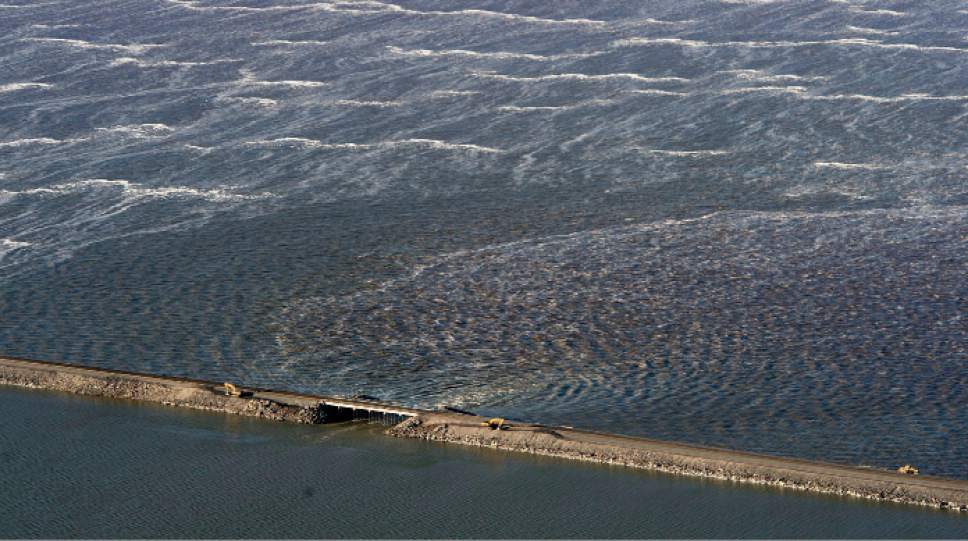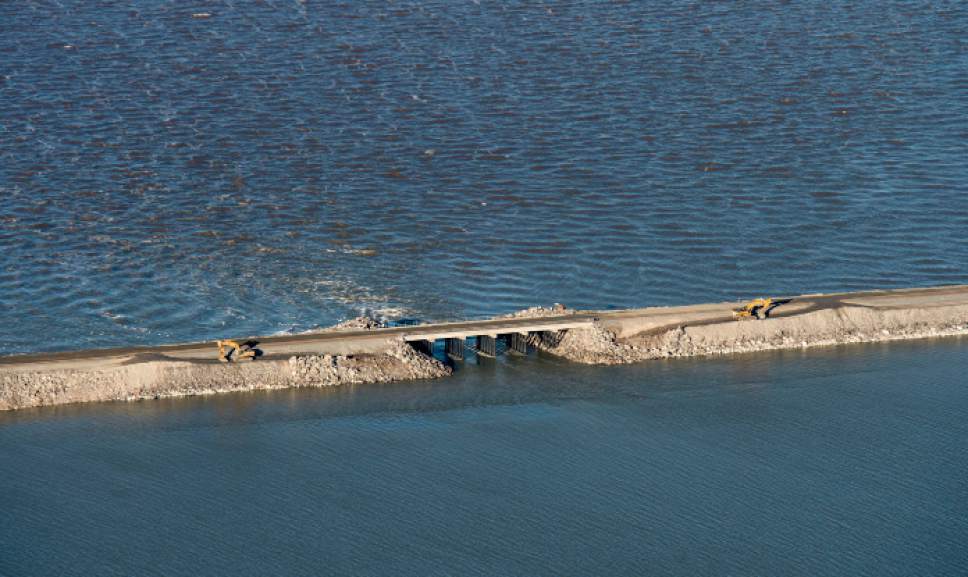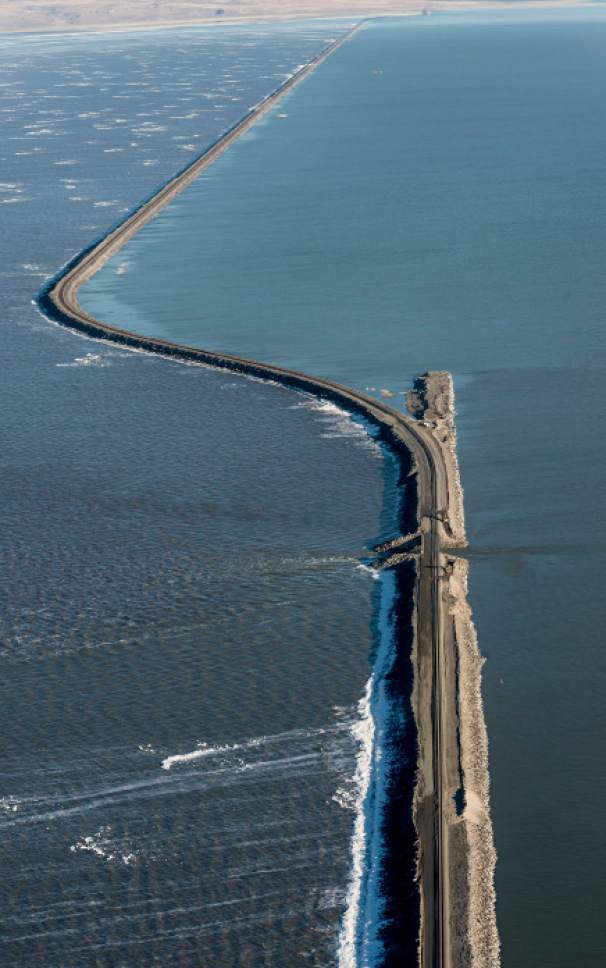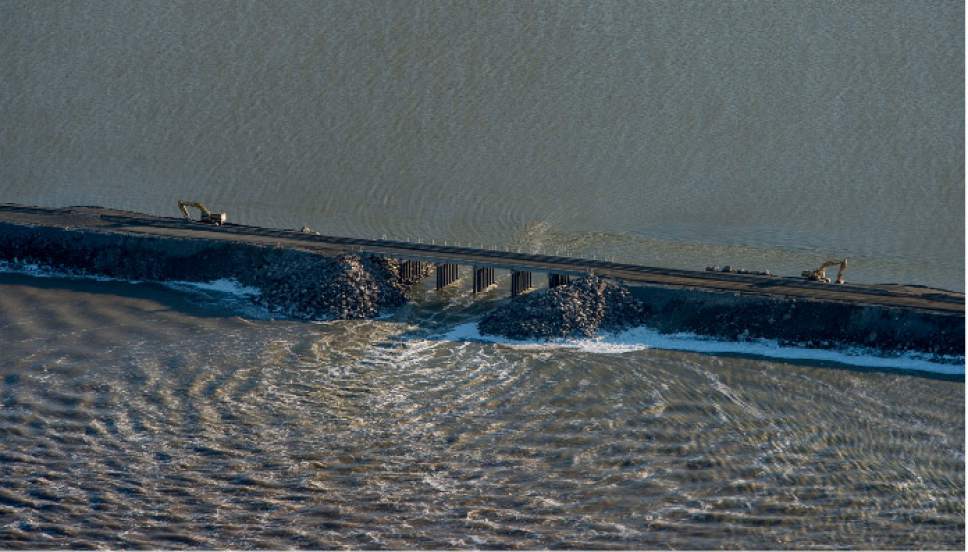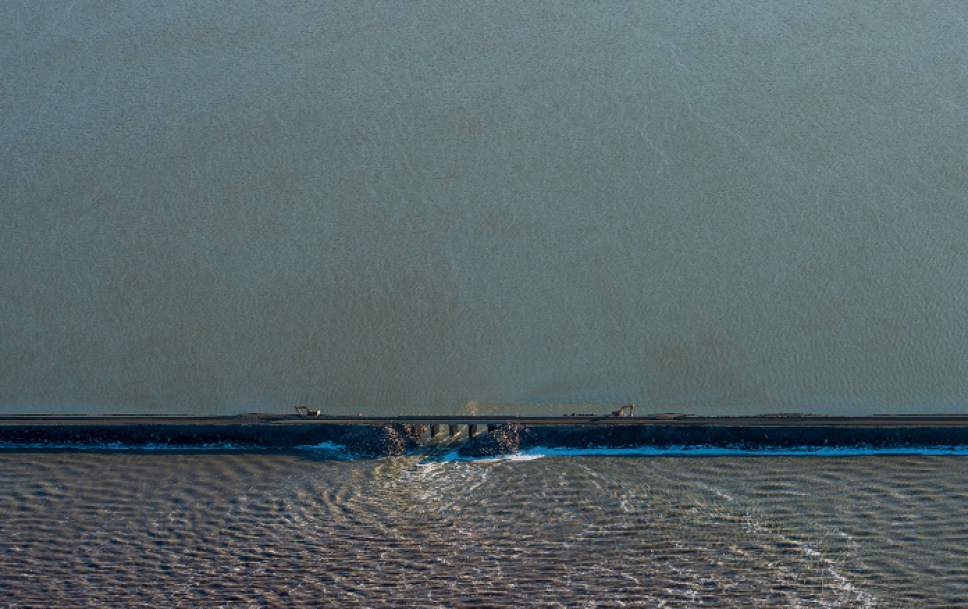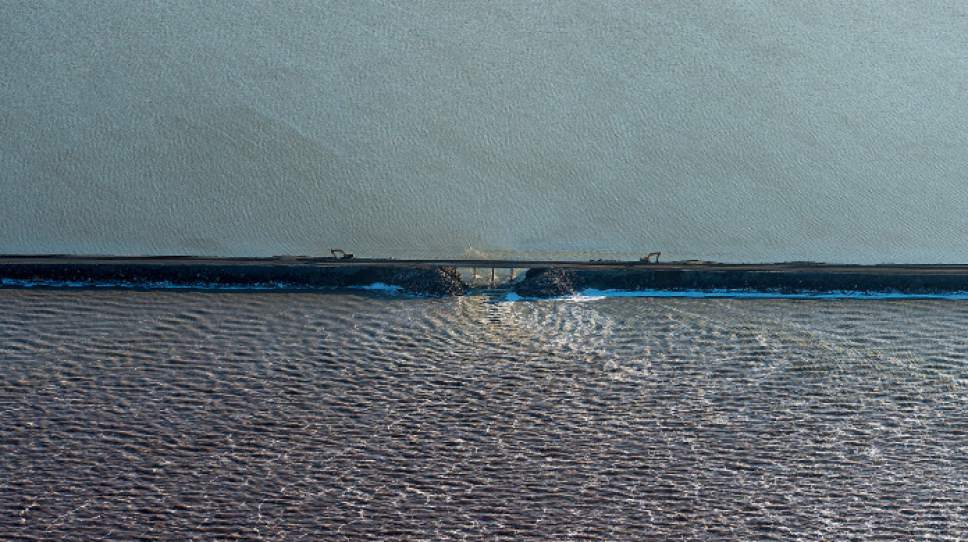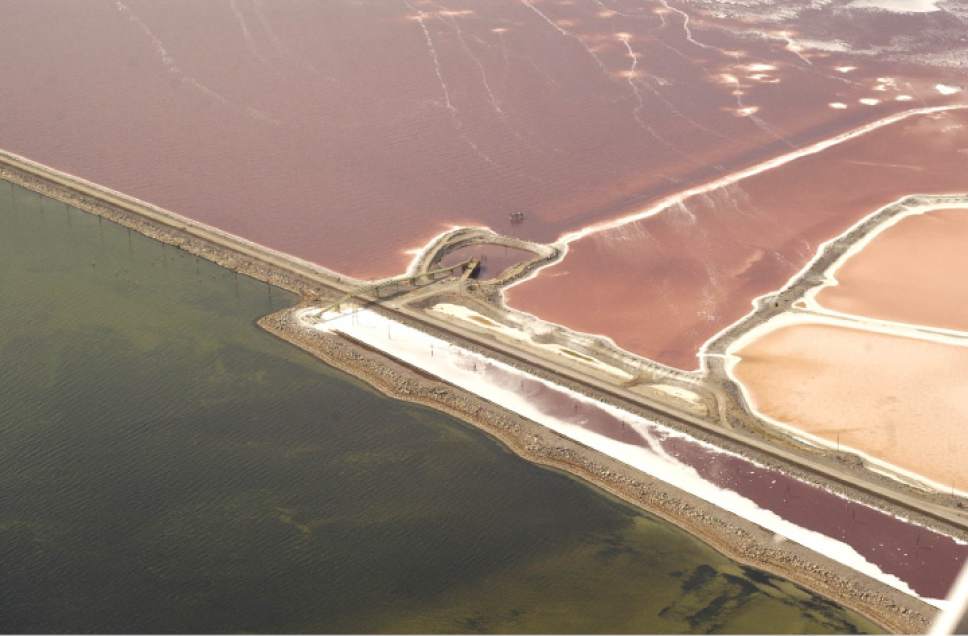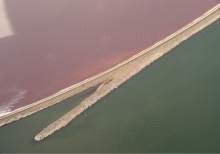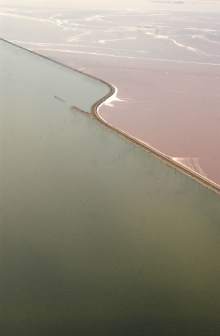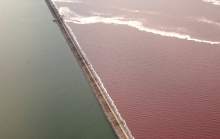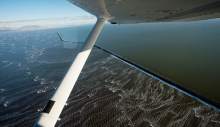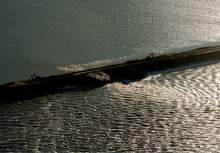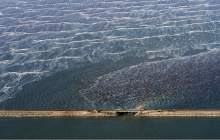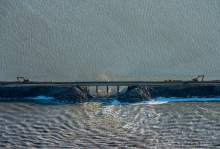The Lucin Cutoff officially opened to rail traffic on Nov. 26, 1903. It was built to replace the original Union Pacific-Central Pa
The Lucin Cutoff officially opened to rail traffic on Nov. 26, 1903. It was built to replace the original Union Pacific-Central Pa
The Lucin Cutoff officially opened to rail traffic on Nov. 26, 1903. It was built to replace the original Union Pacific-Central Pa
Steve Griffin / The Salt Lake Tribune
A breach in the Union Pacific causeway that separates the the north and the south ends of
Steve Griffin / The Salt Lake Tribune
A breach in the Union Pacific causeway that separates the the north and the south ends of
Steve Griffin / The Salt Lake Tribune
A breach in the Union Pacific causeway that separates the the north and the south ends of
Steve Griffin | The Salt Lake Tribune
A breach in the Union Pacific causeway that separates the the north and the south ends of
Steve Griffin / The Salt Lake Tribune
A breach in the Union Pacific causeway that separates the the north and the south ends of
Steve Griffin / The Salt Lake Tribune
A breach in the Union Pacific causeway that separates the the north and the south ends of
Steve Griffin / The Salt Lake Tribune
A breach in the Union Pacific causeway that separates the the north and the south ends of
Steve Griffin / The Salt Lake Tribune
A breach in the Union Pacific causeway that separates the the north and the south ends of
Steve Griffin / The Salt Lake Tribune
A breach in the Union Pacific causeway that separates the the north and the south ends of
Steve Griffin / The Salt Lake Tribune
A breach in the Union Pacific causeway that separates the the north and the south ends of
The Lucin Cutoff officially opened to rail traffic on Nov. 26, 1903. It was built to replace the original Union Pacific-Central Pa
The Lucin Cutoff officially opened to rail traffic on Nov. 26, 1903. It was built to replace the original Union Pacific-Central Pacific tracks completed through Promontory in 1869. It shortened the journey from Lucine to Ogden by more than 40 miles and shaved hours off the railroad's schedule. The causeway across the northern end of the Great Salt Lake in Box Elder County still carries 20 freight trains a day. Francisco Kjolseth/The Salt Lake Tribune 08/27/2002
The Lucin Cutoff officially opened to rail traffic on Nov. 26, 1903. It was built to replace the original Union Pacific-Central Pacific tracks completed through Promontory in 1869. It shortened the journey from Lucine to Ogden by more than 40 miles and shaved hours off the railroad's schedule. The causeway across the northern end of the Great Salt Lake in Box Elder County still carries 20 freight trains a day. Francisco Kjolseth/The Salt Lake Tribune 08/27/2002
The Lucin Cutoff officially opened to rail traffic on Nov. 26, 1903. It was built to replace the original Union Pacific-Central Pacific tracks completed through Promontory in 1869. It shortened the journey from Lucine to Ogden by more than 40 miles and shaved hours off the railroad's schedule. The causeway across the northern end of the Great Salt Lake in Box Elder County still carries 20 freight trains a day. Francisco Kjolseth/The Salt Lake Tribune 08/27/2002
Steve Griffin / The Salt Lake Tribune
A breach in the Union Pacific causeway that separates the the north and the south ends of the Great Salt Lake Friday December 2, 2016.
Steve Griffin / The Salt Lake Tribune
A breach in the Union Pacific causeway that separates the the north and the south ends of the Great Salt Lake Friday December 2, 2016.
Steve Griffin / The Salt Lake Tribune
A breach in the Union Pacific causeway that separates the the north and the south ends of the Great Salt Lake Friday December 2, 2016.
Steve Griffin | The Salt Lake Tribune
A breach in the Union Pacific causeway that separates the the north and the south ends of the Great Salt Lake Friday December 2, 2016.
Steve Griffin / The Salt Lake Tribune
A breach in the Union Pacific causeway that separates the the north and the south ends of the Great Salt Lake Friday December 2, 2016.
Steve Griffin / The Salt Lake Tribune
A breach in the Union Pacific causeway that separates the the north and the south ends of the Great Salt Lake Friday December 2, 2016.
Steve Griffin / The Salt Lake Tribune
A breach in the Union Pacific causeway that separates the the north and the south ends of the Great Salt Lake Friday December 2, 2016.
Steve Griffin / The Salt Lake Tribune
A breach in the Union Pacific causeway that separates the the north and the south ends of the Great Salt Lake Friday December 2, 2016.
Steve Griffin / The Salt Lake Tribune
A breach in the Union Pacific causeway that separates the the north and the south ends of the Great Salt Lake Friday December 2, 2016.
Steve Griffin / The Salt Lake Tribune
A breach in the Union Pacific causeway that separates the the north and the south ends of the Great Salt Lake Friday December 2, 2016.
The Lucin Cutoff officially opened to rail traffic on Nov. 26, 1903. It was built to replace the original Union Pacific-Central Pacific tracks completed through Promontory in 1869. It shortened the journey from Lucine to Ogden by more than 40 miles and shaved hours off the railroad's schedule. The causeway across the northern end of the Great Salt Lake in Box Elder County still carries 20 freight trains a day. Francisco Kjolseth/The Salt Lake Tribune 08/27/2002







